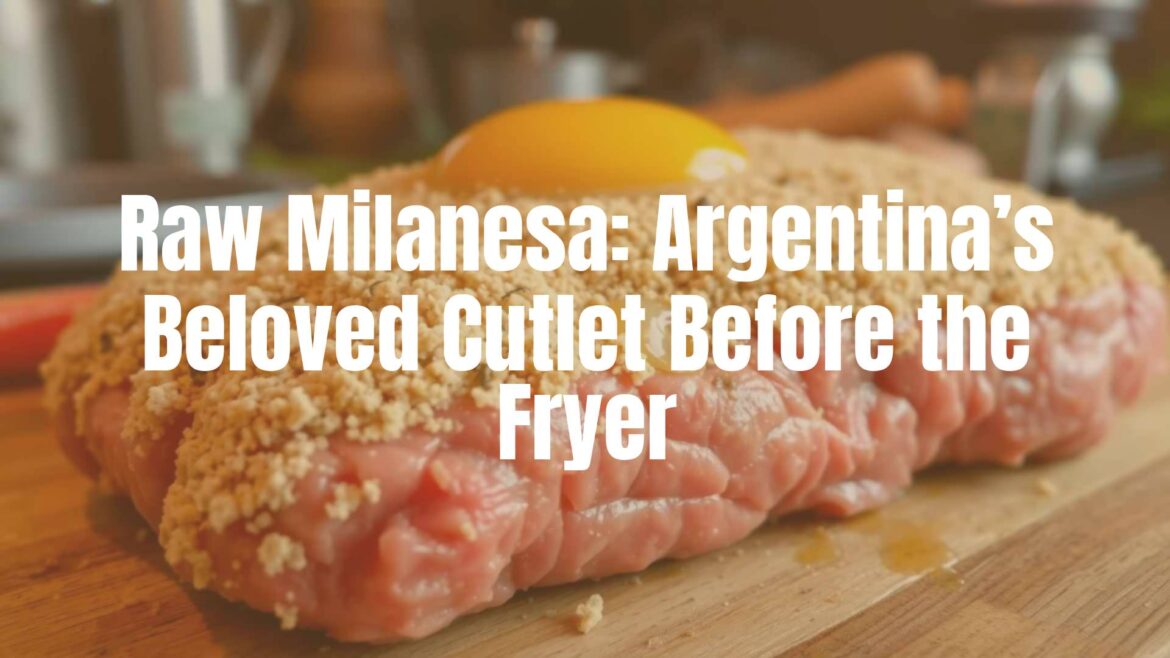Understanding Raw Milanesa in Argentinian Cuisine
In Argentina, milanesa stands as a culinary icon—a shining example of comfort food enjoyed across generations. But before it reaches the sizzling frypan and takes on its golden, crispy crust, it exists as what is called “raw milanesa.” This initial, uncooked stage of milanesa is more than just a step in meal preparation; it’s a key part of the country’s food culture, showcasing unique techniques, ingredients, and even sparking traditions all its own.
The Anatomy of an Argentinian Raw Milanesa
At its core, a raw milanesa consists of thinly sliced beef (often from cuts like nalga or cuadrada) that is tenderized and then coated. The defining step is the double-dip breading process: slices are dredged in beaten eggs often seasoned with garlic, parsley, and pepper, then rolled through breadcrumbs or, less commonly, crushed crackers. Sometimes a dusting of flour precedes the egg bath, giving a sturdier crust.
Origins and Evolution
The milanesa owes its roots to Italian immigrants who brought over traditions of breaded cutlets such as the cotoletta alla milanese. In Argentina, these customs blended with local cuts and preferences, forming today’s milanesa. The raw form remains the most commonly bought version in Argentine butcher shops and supermarkets, where families select their preferred cut and thickness, then have milanesas breaded while they wait.
Cultural Role and Daily Life
Buying or preparing raw milanesas at home is a ritual in countless Argentinian households. Many people keep a platter of raw milanesas in the fridge, ready to cook for an impromptu lunch or dinner, knowing they suit nearly any palate—children and adults alike. Some families prepare large batches, freezing raw milanesas for quick meals throughout the week.
Variations Across the Country
The basic beef milanesa is ever-popular, but regional variations abound. In some provinces, milanesas are made from chicken (“milanesa de pollo”), pork, or even eggplant for a vegetarian twist. The foundation—well-seasoned, breaded slices ready for frying—remains unchanged. In certain areas, herbs and spices added to the egg wash reflect local flavor traditions.
Frequently Asked Questions
Can you eat raw milanesa? No, raw milanesa is meant to be cooked before eating. It’s sold and stored uncooked for convenience and freshness.
Why do people buy them raw? Purchasing milanesas pre-breaded but uncooked saves time and maintains the crispy, fresh quality when fried at home.
How is raw milanesa different from a schnitzel? While similar in preparation, Argentinian milanesa is usually thinner, seasoned differently, and made with specific local cuts of meat.
Conclusion
Raw milanesa is more than a stage in preparing Argentina’s treasured breaded cutlet—it’s a testament to the country’s love of good food and practical, family-friendly traditions. Whether found at a local butcher, a supermarket counter, or homemade, its presence on the dinner table is a cherished part of everyday Argentinian life.


